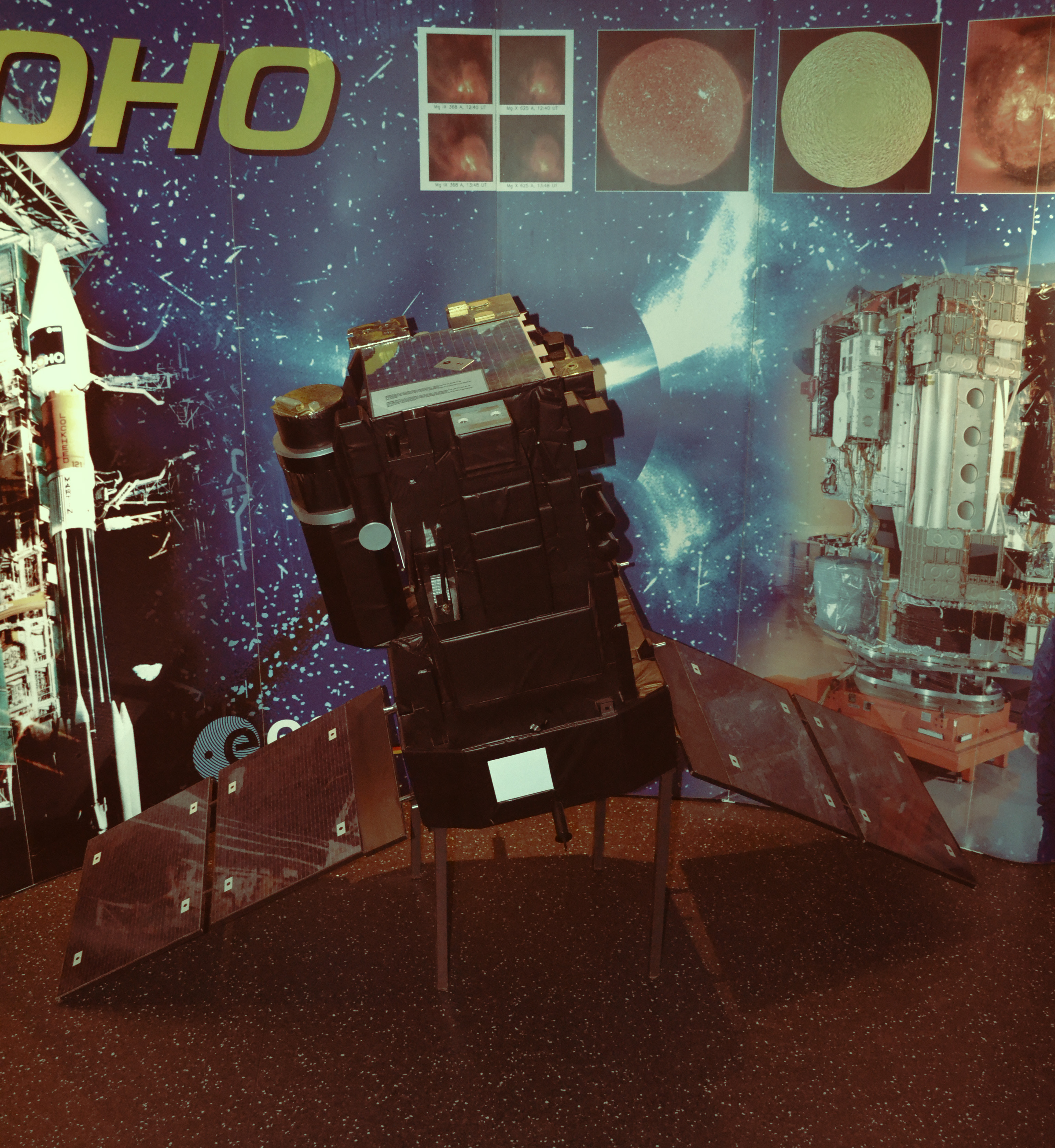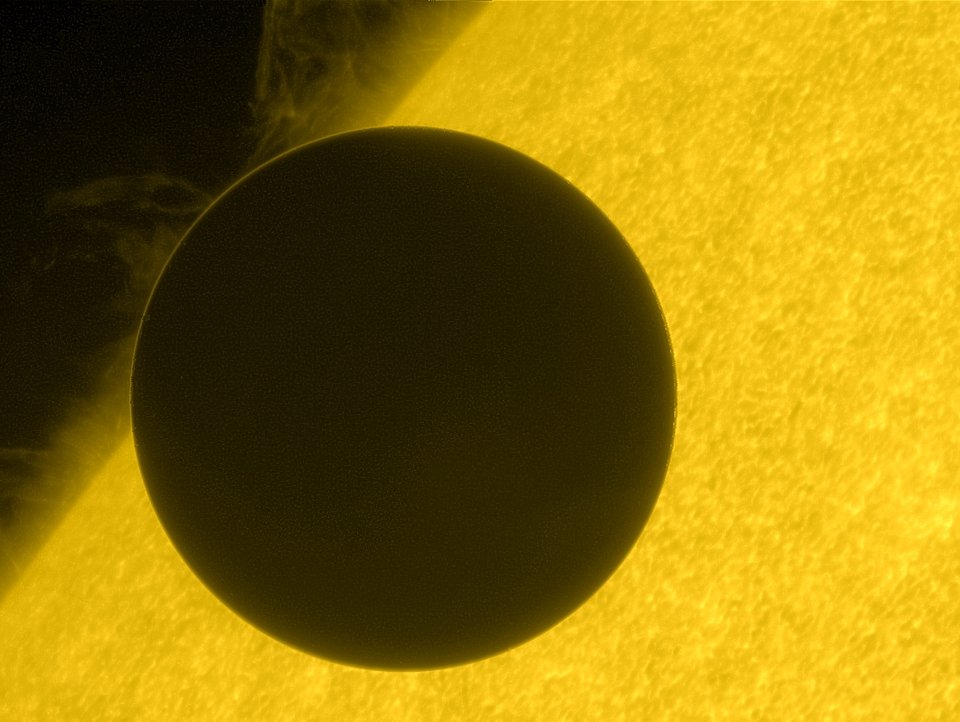|
Lockheed Martin Solar And Astrophysics Laboratory
The Lockheed Martin Solar and Astrophysics Laboratory (LMSAL) is part of the Lockheed Martin Advanced Technology Center (ATC) that is known primarily for its scientific work in the field of solar physics, astronomy and space weather. The LMSAL team is part of Lockheed Martin Space Systems and has close affiliations with NASA and the solar physics group at Stanford University. Located in Palo Alto, California, LMSAL is involved in many ground- and space-based missions that study the Sun, with a sharp focus on basic research into understanding and predicting space weather and the behavior of the Sun, including its impacts on Earth and climate. Space weather Enormous storms on the Sun driven by electromagnetic activity generate space weather that propagates outward across the solar system and can cause severe disturbances of Earth's upper atmosphere and of the near-Earth space environment, with potential catastrophic impacts on ground- and space-based technological infrastructur ... [...More Info...] [...Related Items...] OR: [Wikipedia] [Google] [Baidu] |
Lockheed Martin
The Lockheed Martin Corporation is an American aerospace, arms, defense, information security, and technology corporation with worldwide interests. It was formed by the merger of Lockheed Corporation with Martin Marietta in March 1995. It is headquartered in North Bethesda, Maryland, in the Washington, D.C. area. Lockheed Martin employs approximately 115,000 employees worldwide, including about 60,000 engineers and scientists as of January 2022. Lockheed Martin is one of the largest companies in the aerospace, military support, security, and technologies industry. It is the world's largest defense contractor by revenue for fiscal year 2014.POC Top 20 Defence Contractors of 2014 . Retrieved: July 2015 In 2013, 78% of Lockheed Martin's revenues came from military sales; [...More Info...] [...Related Items...] OR: [Wikipedia] [Google] [Baidu] |
Solar And Heliospheric Observatory
The Solar and Heliospheric Observatory (SOHO) is a European Space Agency (ESA) spacecraft built by a European industrial consortium led by Matra Marconi Space (now Airbus Defence and Space) that was launched on a Lockheed Martin Atlas IIAS launch vehicle on 2 December 1995, to study the Sun. It has also discovered over 4,000 comets.(2,703 discoveries as of 21 April 2014) It began normal operations in May 1996. It is a joint project between the (ESA) and . SOHO was part of the In ... [...More Info...] [...Related Items...] OR: [Wikipedia] [Google] [Baidu] |
Interface Region Imaging Spectrograph
Interface Region Imaging Spectrograph (IRIS), also called Explorer 94 and SMEX-12, is a NASA solar observation satellite. The mission was funded through the Small Explorer program to investigate the physical conditions of the solar limb, particularly the interface region made up of the chromosphere and transition region. The spacecraft consists of a satellite bus and spectrometer built by the Lockheed Martin Solar and Astrophysics Laboratory (LMSAL), and a telescope provided by the Smithsonian Astrophysical Observatory (SAO). IRIS is operated by LMSAL and NASA's Ames Research Center. The satellite's instrument is a high-frame-rate ultraviolet imaging spectrometer, providing one image per second at 0.3 arcsecond angular resolution and sub-ångström spectral resolution. NASA announced, on 19 June 2009, that IRIS was selected from six Small Explorer mission candidates for further study, along with the Gravity and Extreme Magnetism (GEMS) space observatory. Mission IRIS i ... [...More Info...] [...Related Items...] OR: [Wikipedia] [Google] [Baidu] |
SUVI
Suvi Suresh (born as Swetha Suresh on 26 September 1987) is an Indian singer with Sri Lankan roots. She was a member of the band S5 launched by the channel SS Music. She shot to fame with the song "Kodana Kodi" from '' Saroja'', composed by Yuvan Shankar Raja. Presently, she is a member of the band Soulsonic. She was sung & dance for 'Koodanu Kodi' song in Stage in the program "Mega Unplugged" on 2010 that had her costume was totally gorgeous. Whole of the audience were shocked to see her in that costume. But now that "Mega Unplugged" concert show is not available. So fans are very sad and all fans are now requesting to get that music concert video in Social media. Biography Swetha hails from Thrissur, Kerala, India. She owes her name to a spelling mistake. She wanted to be known by her pet name "Swe" but on the Kuruvi cover her name was printed as "Suvi". She auditioned for SS Music's voice hunt competition at age 17 and was selected to be part of S5 with Benny Dayal, Anait ... [...More Info...] [...Related Items...] OR: [Wikipedia] [Google] [Baidu] |
Geostationary Lightning Mapper
GOES-16, formerly known as GOES-R before reaching geostationary orbit, is the first of the GOES-R series of Geostationary Operational Environmental Satellites (GOES) operated by NASA and the National Oceanic and Atmospheric Administration (NOAA). GOES-16 serves as the operational geostationary weather satellite in the GOES East position at 75.2°W, providing a view centered on the Americas. GOES-16 provides high spatial and temporal resolution imagery of the Earth through 16 spectral bands at visible and infrared wavelengths using its Advanced Baseline Imager (ABI). GOES-16's Geostationary Lightning Mapper (GLM) is the first operational lightning mapper flown in geostationary orbit. The spacecraft also includes four other scientific instruments for monitoring space weather and the Sun. GOES-16's design and instrumentation began in 1999 and was intended to fill key NOAA satellite requirements published that year. Following nearly a decade of instrument planning, ... [...More Info...] [...Related Items...] OR: [Wikipedia] [Google] [Baidu] |
Solar Dynamics Observatory
The Solar Dynamics Observatory (SDO) is a NASA mission which has been observing the Sun since 2010. Launched on 11 February 2010, the observatory is part of the Living With a Star (LWS) program. The goal of the LWS program is to develop the scientific understanding necessary to effectively address those aspects of the connected Sun–Earth system directly affecting life and society. The goal of the SDO is to understand the influence of the Sun on the Earth and near-Earth space by studying the solar atmosphere on small scales of space and time and in many wavelengths simultaneously. SDO has been investigating how the Sun's magnetic field is generated and structured, how this stored magnetic energy is converted and released into the heliosphere and geospace in the form of solar wind, energetic particles, and variations in the solar irradiance. General The SDO spacecraft was developed at NASA's Goddard Space Flight Center in Greenbelt, Maryland, and launched on 11 Feb ... [...More Info...] [...Related Items...] OR: [Wikipedia] [Google] [Baidu] |
Solar-B
Hinode (; ja, ひので, , Sunrise), formerly Solar-B, is a Japan Aerospace Exploration Agency Solar mission with United States and United Kingdom collaboration. It is the follow-up to the Yohkoh (Solar-A) mission and it was launched on the final flight of the M-V rocket from Uchinoura Space Center, Japan on 22 September 2006 at 21:36 UTC (23 September, 06:36 JST). Initial orbit was perigee height 280 km, apogee height 686 km, inclination 98.3 degrees. Then the satellite maneuvered to the quasi-circular sun-synchronous orbit over the day/night terminator, which allows near-continuous observation of the Sun. On 28 October 2006, the probe's instruments captured their first images. The data from Hinode are being downloaded to the Norwegian, terrestrial Svalsat station, operated by ''Kongsberg'' a few kilometres west of Longyearbyen, Svalbard. From there, data is transmitted by Telenor through a fibre-optic network to mainland Norway at Harstad, and on to data use ... [...More Info...] [...Related Items...] OR: [Wikipedia] [Google] [Baidu] |
GOES
Goes () is a city and municipality in the southwestern Netherlands on Zuid-Beveland, in the province of Zeeland. The city of Goes has approximately 27,000 residents. History Goes was founded in the 10th century on the edge of a creek: de Korte Gos (the Short Gos). The village grew fast, and in the early 12th century it had a market square and a church devoted to Mary Magdalene. By 1300 it had a brick castle, now known as Oostende Castle. In 1405 Goes received city rights from William, Duke of Bavaria, by his right as count of Holland, and in 1417 it was allowed to build town walls. The prosperity of the city was based upon the cloth industry and the production of salt. In the 16th century Goes declined. Its connection to the sea silted up and in 1554 a large fire destroyed part of the city. In the Autumn of 1572, during the course of the Eighty Years' War, Goes, in the Spanish Netherlands, was besieged by Dutch forces with the support of English troops. The siege was rel ... [...More Info...] [...Related Items...] OR: [Wikipedia] [Google] [Baidu] |
Solar X-ray Imager
Solar X-ray Imager (SXI) are full-disc X-ray instruments observing the Sun aboard GOES satellites. The SXI on GOES 12 was the first of its kind and allows the U.S. NOAA to better monitor and predict space weather. Operation The Solar X-ray Imager aboard the GOES 12, GOES 13, GOES 14, and GOES 15 NOAA weather satellites is used for early detection of solar flares, coronal mass ejections (CMEs), and space phenomena that impact human spaceflight and military and commercial satellite communications. The Solar X-ray Imager was the first X-ray telescope to take a "full-disk" image of the Sun, providing forecasters with the ability to detect solar storms and real-time solar forecasting by the Space Weather Prediction Center (SWPC). Imagery The SXI aboard GOES 12 is a Wolter Type I (Wolter telescope) grazing incidence X-ray telescope designed to record coronal images in continuous sequence at 1-minute intervals. The Solar X-ray Imager obtains images at multiple wavelengths on the electro ... [...More Info...] [...Related Items...] OR: [Wikipedia] [Google] [Baidu] |
STEREO
Stereophonic sound, or more commonly stereo, is a method of sound reproduction that recreates a multi-directional, 3-dimensional audible perspective. This is usually achieved by using two independent audio channels through a configuration of two loudspeakers (or stereo headphones) in such a way as to create the impression of sound heard from various directions, as in natural hearing. Because the multi-dimensional perspective is the crucial aspect, the term ''stereophonic'' also applies to systems with more than two channels or speakers such as quadraphonic and surround sound. Binaural sound systems are also ''stereophonic''. Stereo sound has been in common use since the 1970s in entertainment media such as broadcast radio, recorded music, television, video cameras, cinema, computer audio, and internet. Etymology The word ''stereophonic'' derives from the Greek (''stereós'', "firm, solid") + (''phōnḗ'', "sound, tone, voice") and it was coined in 1927 by Western E ... [...More Info...] [...Related Items...] OR: [Wikipedia] [Google] [Baidu] |
TRACE
Trace may refer to: Arts and entertainment Music * ''Trace'' (Son Volt album), 1995 * ''Trace'' (Died Pretty album), 1993 * Trace (band), a Dutch progressive rock band * ''The Trace'' (album) Other uses in arts and entertainment * ''Trace'' (magazine), British hip-hop magazine * ''Trace'' (manhwa), a Korean internet cartoon * ''Trace'' (novel), a novel by Patricia Cornwell * ''The Trace'' (film), a 1994 Turkish film * ''The Trace'' (video game), 2015 video game * ''Sama'' (film), alternate title ''The Trace'', a 1988 Tunisian film * Trace, a fictional character in the game '' Metroid Prime Hunters'' * Trace, the protagonist of '' Axiom Verge'' * Trace, another name for Portgas D. Ace, a fictional character in the manga ''One Piece'' * TRACE, the main brand for a number of music channels such as Trace Urban Language * Trace (deconstruction), a concept in Derridian deconstruction * Trace (linguistics), a syntactic placeholder resulting from a transformation * TRACE (psyc ... [...More Info...] [...Related Items...] OR: [Wikipedia] [Google] [Baidu] |
Yohkoh
Yohkoh (, ''Sunbeam'' in Japanese), known before launch as Solar-A, was a Solar observatory spacecraft of the Institute of Space and Astronautical Science (Japan), in collaboration with space agencies in the United States and the United Kingdom. It was launched into Earth orbit on August 30, 1991 by the M-3SII rocket from Kagoshima Space Center. It took its first soft X-ray image on September 13, 1991, 21:53:40, and movie representations of the X-ray corona over 1991-2001 are available at thYohkoh Legacy site Description The satellite was three-axis stabilized and in a near-circular orbit. It carried four instruments: a Soft X-ray Telescope (SXT), a Hard X-ray Telescope (HXT), a Bragg Crystal Spectrometer (BCS), and a Wide Band Spectrometer (WBS). About 50 MB were generated each day and stored on board by a 10.5 MB bubble memory recorder. Because SXT utilized a charge-coupled device (CCD) as its readout device, perhaps being the first X-ray astronomical telescope to ... [...More Info...] [...Related Items...] OR: [Wikipedia] [Google] [Baidu] |



.jpg)




